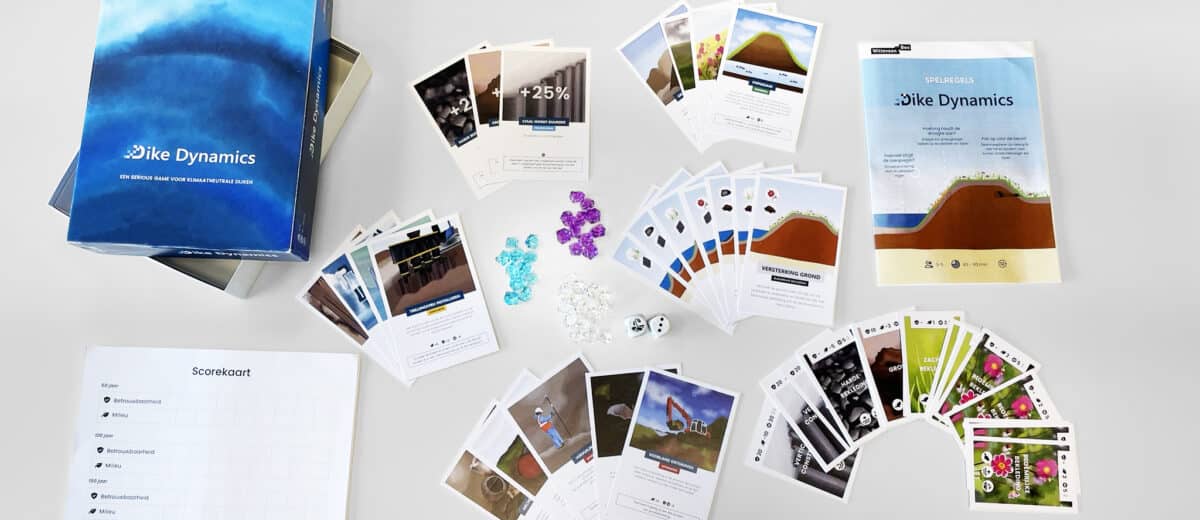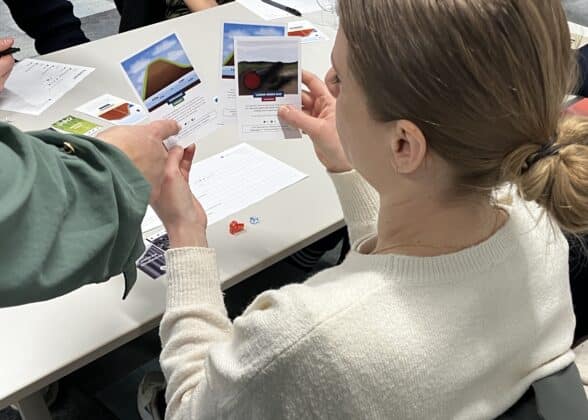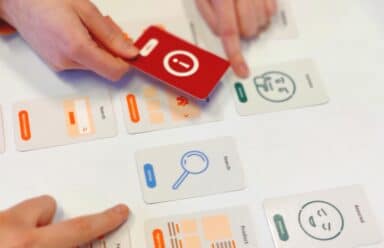
Dike Dynamics: Together we will build a sustainable future
How do you ensure you can involve everyone in a complex topic? In an era in which climate change increasingly poses challenges, such as rising sea levels and more extreme weather conditions, designing sustainable dikes is crucial. But how do you proceed in a complex field such as dike management? How can you predict the impact of the decisions you make? And how do you engage in discussions with stakeholders, such as local residents, policymakers, water boards and engineers? For this issue, our Witteveen+Bos colleague Lieneke developed the serious game Dike Dynamics, in which players compete to build a sustainable dike that remains reliable for 150 years.
The power of dialogue
Dike Dynamics is designed to play an initiating, formative role in decision-making for dike design, with a long-term perspective. Players are challenged to make trade-offs between short-term and long-term effects: When do you decide to reinforce a dike? And how do you keep the environment as intact as possible? The interactive setting creates a constructive, meaningful dialogue about the challenges and opportunities of dike reinforcement. In addition, the game’s direct feedback loop ensures that players immediately learn what the impact of their choices is. This allows you to explore different scenarios.

Iterative design: continuous improvement
To create a successful serious game like Dike Dynamics, it is important to put the user first and work iteratively. We do this by applying a design thinking approach, using interviews, prototypes and user testing. We continue to actively involve the user and continuously improve the game based on their feedback. This ensures that the game seamlessly matches their needs and wishes.
Learning by doing
Serious games like Dike Dynamics have a unique way of making complex subjects accessible and understandable. By learning through play, people become more actively involved and develop a deeper understanding of the subject matter. This not only makes the learning process more fun, but also more effective. After all, people remember 70% of what they experience, which means that learning by doing is very time- and cost-effective.
What do participants say?
“It is an ideal game to introduce newcomers and citizens to the project and the difficulties involved.”
“Playing a game promotes cooperation within a team. The division between roles becomes clear too. Who is the leader, who follows, etc.”

Interessed in Dike Dynamics?
Are you interested in playing Dike Dynamics or do you want to develop another serious game that fits within your context? At GriDD we are ready to explore the possibilities with you. Feel free to contact Willemijn or Julia for more information.
 Willemijn Rutte
Willemijn Rutte 

